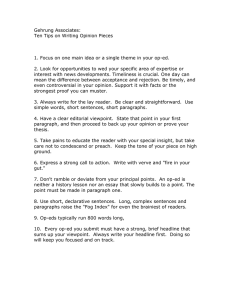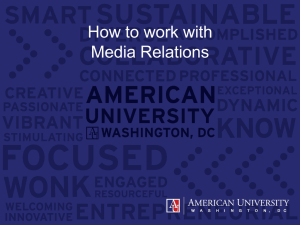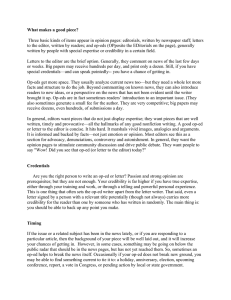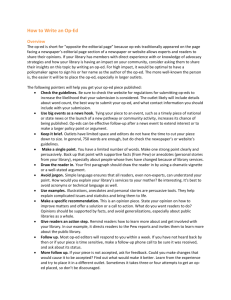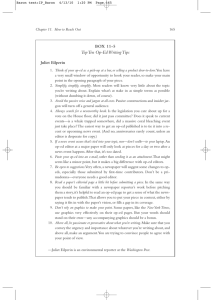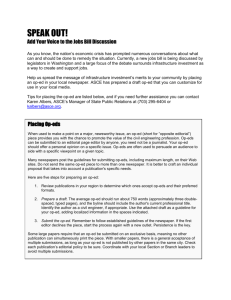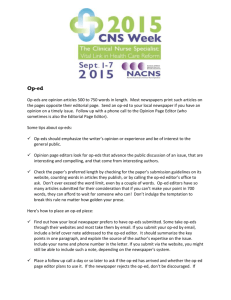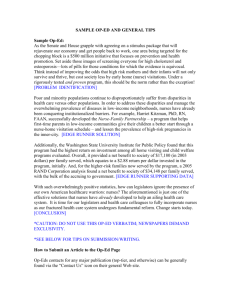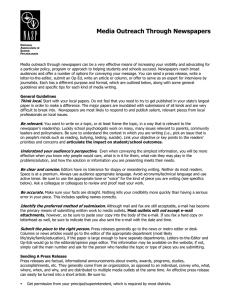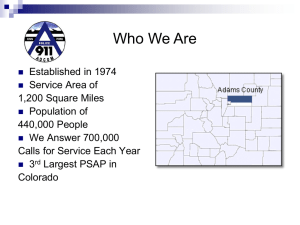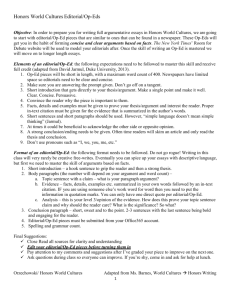TIPS FOR PLACING OP-EDS AND LETTER TO THE EDITOR
advertisement
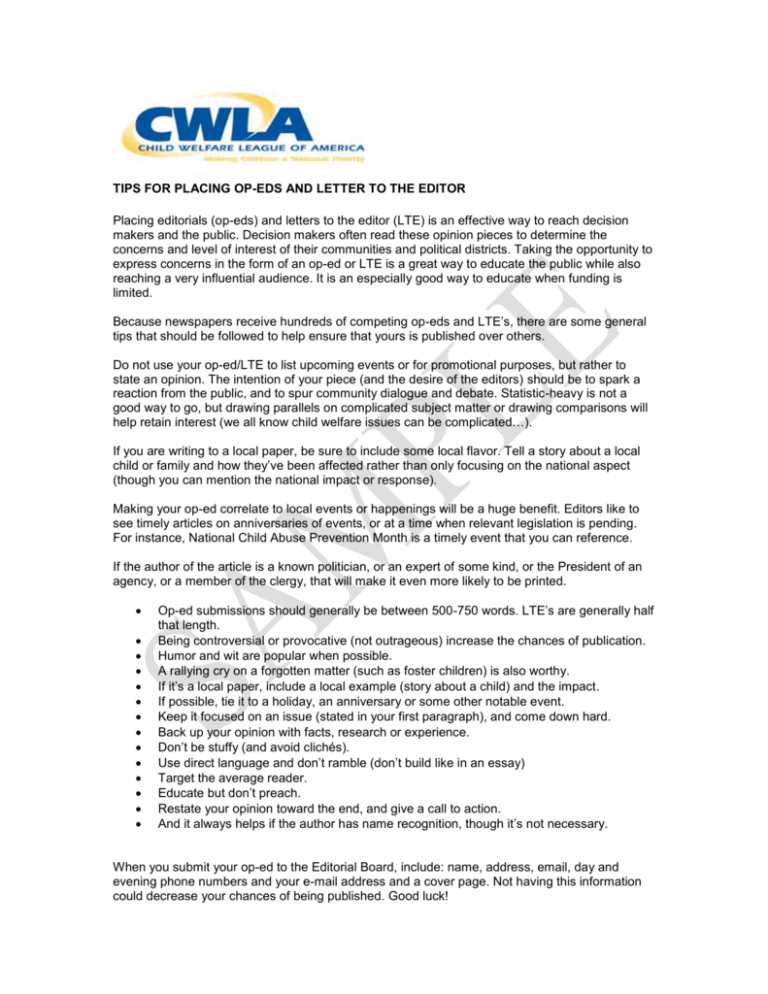
TIPS FOR PLACING OP-EDS AND LETTER TO THE EDITOR Placing editorials (op-eds) and letters to the editor (LTE) is an effective way to reach decision makers and the public. Decision makers often read these opinion pieces to determine the concerns and level of interest of their communities and political districts. Taking the opportunity to express concerns in the form of an op-ed or LTE is a great way to educate the public while also reaching a very influential audience. It is an especially good way to educate when funding is limited. Because newspapers receive hundreds of competing op-eds and LTE’s, there are some general tips that should be followed to help ensure that yours is published over others. Do not use your op-ed/LTE to list upcoming events or for promotional purposes, but rather to state an opinion. The intention of your piece (and the desire of the editors) should be to spark a reaction from the public, and to spur community dialogue and debate. Statistic-heavy is not a good way to go, but drawing parallels on complicated subject matter or drawing comparisons will help retain interest (we all know child welfare issues can be complicated…). If you are writing to a local paper, be sure to include some local flavor. Tell a story about a local child or family and how they’ve been affected rather than only focusing on the national aspect (though you can mention the national impact or response). Making your op-ed correlate to local events or happenings will be a huge benefit. Editors like to see timely articles on anniversaries of events, or at a time when relevant legislation is pending. For instance, National Child Abuse Prevention Month is a timely event that you can reference. If the author of the article is a known politician, or an expert of some kind, or the President of an agency, or a member of the clergy, that will make it even more likely to be printed. Op-ed submissions should generally be between 500-750 words. LTE’s are generally half that length. Being controversial or provocative (not outrageous) increase the chances of publication. Humor and wit are popular when possible. A rallying cry on a forgotten matter (such as foster children) is also worthy. If it’s a local paper, include a local example (story about a child) and the impact. If possible, tie it to a holiday, an anniversary or some other notable event. Keep it focused on an issue (stated in your first paragraph), and come down hard. Back up your opinion with facts, research or experience. Don’t be stuffy (and avoid clichés). Use direct language and don’t ramble (don’t build like in an essay) Target the average reader. Educate but don’t preach. Restate your opinion toward the end, and give a call to action. And it always helps if the author has name recognition, though it’s not necessary. When you submit your op-ed to the Editorial Board, include: name, address, email, day and evening phone numbers and your e-mail address and a cover page. Not having this information could decrease your chances of being published. Good luck!
